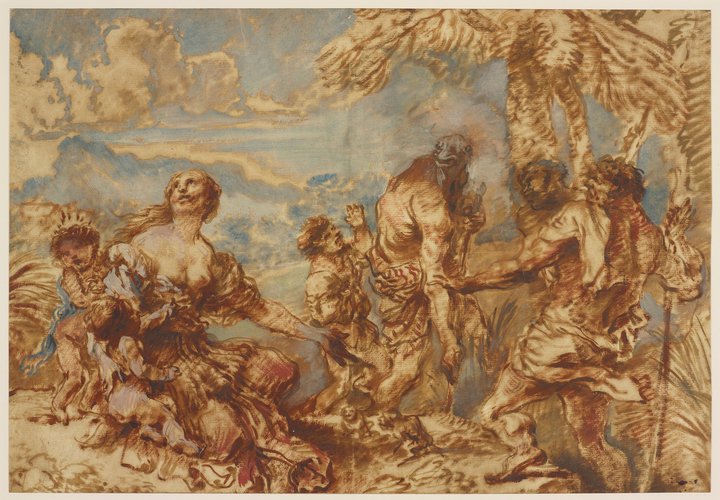The last post in this series is from quite a while ago. About high time we change this and delve into the short history of yet another Greek city during the Hellenistic period. This time we turn our eye to Messene. This city lies in the southern part of the Peloponnese in close proximity to Ancient Sparta. Today, as a result of extensive archaeological excavations, the archaeological site of Ancient Messene is one of the most impressive in the whole of Greece. Which is definitely worth a visit if you get a chance!
When it was founded in 369 BC, Messene already had an established place in the Greek world. It is important to note however that at the time of the foundation, there was a difference between the region of Messene and the polis Messene, originally called Ithome after the mountain that was in close proximity to the city. By the second century AD, however, the city had taken the name Messene and the wider region around it was now called Messenia, indicating that the polis had established itself as the center of the region. Just as with the foundation of Megalopolis, the reason for the creation of Messene (or Ithome) lies in the changing political reality of the Peloponnese after the Spartan defeat at Leuktra. Up until that point, the people living in the region had primarily been united as Helots and perioikoi under Spartan control but after the Theban defeat of Sparta, they believed the time was right to curb Spartan power even further by uniting in a political state (Paus. 4. 26. 6; 4. 28. 1). Who better to (re)found such a city, than the Theban general Epaminondas. He is credited with this achievement by several ancient authors: Plutarch (Ages. 34. 1), Diodorus (15. 66. 1), Nepos (Ep. 8. 4) and Pausanias who states that both the Messenians and the Thebans considered him to be the founder of the polis (Paus. 4. 31. 10; 9. 15. 6).

In the centuries after its foundation, the city was regularly confronted by invasions. Due to its geographical proximity to Sparta and the earlier history between the two cities, there was a natural enmity between them and frequent Spartan attacks followed after 369 BC such as he attack by the Spartan king Nabis in 201 BC (Plut. Phil. 12. 4-5). The emergence of Philip of Macedon, however, was greeted by the Messenians with open arms, establishing a history of close cooperation between the Macedonian kings and the two city. Messene was a Macedonian ally in several of the big conflicts such as the battle of Chaironea in 338 BC and the Chremonidean War (267-261 BC), for which it was highly rewarded as it gained control of areas previously belonging to Sparta. However, after Alexander’s campaigns and under the rule of the Antigonid dynasty, this close relationship seems to have deteriorated a little with Messene choosing to remain neutral in most conflicts.
In 191 BC the polis was inducted into the Achaean Koinon in 191 BC under its strategos Diophanes of Megalopolis (Livy 36. 31. 1-10). This happened much against the will of the citizens and it was the start of a troubled between two states who always been at odds as they ended up on opposite sides of many conflicts, since Messene was always weary of the expansionist policy of the koinon which threatened city’s independence. Consequently, the Messenians were not thrilled about their Achaian membership (Pol. 22. 10. 4-6) and under an influential Messenian named Deinokrates the polis tried to secede in 183 BC. Philopoimen, who was the strategos of the koinon, tried to curb the rebellion but was captured and killed in Messene (Plut. Phil. 18; Livy 39. 49; Paus. 4. 29. 12). Following Philopoimen’s death, Lykortas took over as strategos and ransacked Messene and the surrounding areas. At the end of the rebellion, Philopoimen’s body was transported back to Megalopolis and buried there, accompanied by great honours. Eventually a statue of the statesman was erected in his hometown Megalopolis and he received a lavish funerary procession and his own cult (IG V 2 432). The relationship between the Koinon and the city remained strained and when the Koinon was defeated by the Romans in 146 BC, the polis was one of the first cities to surrender and remained an important Greek city under the Roman rule.
Further Reading:
Close, E., (2018) Megalopolis and the Achaian koinon: local identity and the federal state, PhD Thesis, The University of Edinburgh.
Luraghi, N. (2008), The Ancient Messenians : Constructions of Ethnicity and Memory, Cambridge.
Luraghi, N. and Magnetto, A. (2012), ‘The Controversy between Megalopolis and Messene in a New Inscription from Messene’, Chiron 42, 509-550.
Thür, G. (2011), ‘Dispute over ownership in Greek Law: Prliminary Thoughts about a New Inscription from Messene’ in B. Legras and G. Thür (eds.), Symposion 2011, 293-216.




